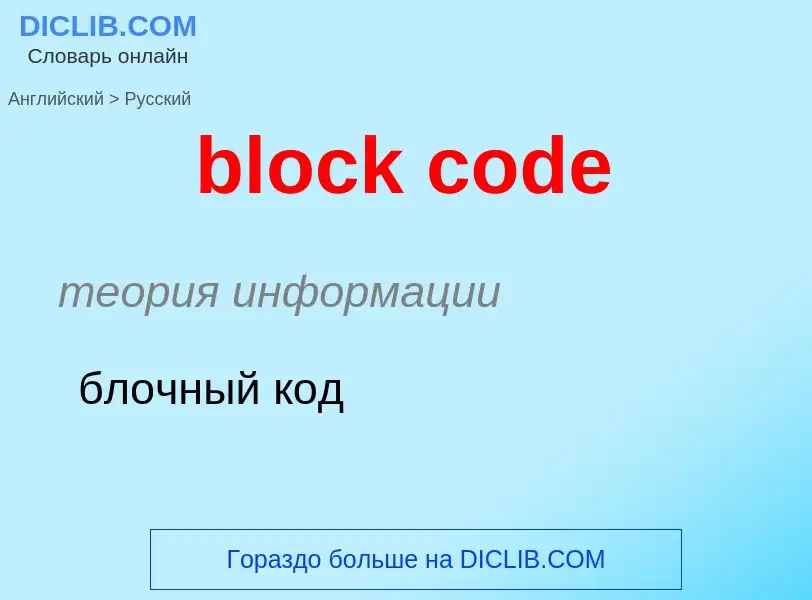Vertaling en analyse van woorden door kunstmatige intelligentie ChatGPT
Op deze pagina kunt u een gedetailleerde analyse krijgen van een woord of zin, geproduceerd met behulp van de beste kunstmatige intelligentietechnologie tot nu toe:
- hoe het woord wordt gebruikt
- gebruiksfrequentie
- het wordt vaker gebruikt in mondelinge of schriftelijke toespraken
- opties voor woordvertaling
- Gebruiksvoorbeelden (meerdere zinnen met vertaling)
- etymologie
block code - vertaling naar russisch
теория информации
блочный код
Definitie
Wikipedia
In coding theory, block codes are a large and important family of error-correcting codes that encode data in blocks. There is a vast number of examples for block codes, many of which have a wide range of practical applications. The abstract definition of block codes is conceptually useful because it allows coding theorists, mathematicians, and computer scientists to study the limitations of all block codes in a unified way. Such limitations often take the form of bounds that relate different parameters of the block code to each other, such as its rate and its ability to detect and correct errors.
Examples of block codes are Reed–Solomon codes, Hamming codes, Hadamard codes, Expander codes, Golay codes, and Reed–Muller codes. These examples also belong to the class of linear codes, and hence they are called linear block codes. More particularly, these codes are known as algebraic block codes, or cyclic block codes, because they can be generated using boolean polynomials.
Algebraic block codes are typically hard-decoded using algebraic decoders.
The term block code may also refer to any error-correcting code that acts on a block of bits of input data to produce bits of output data . Consequently, the block coder is a memoryless device. Under this definition codes such as turbo codes, terminated convolutional codes and other iteratively decodable codes (turbo-like codes) would also be considered block codes. A non-terminated convolutional encoder would be an example of a non-block (unframed) code, which has memory and is instead classified as a tree code.
This article deals with "algebraic block codes".



